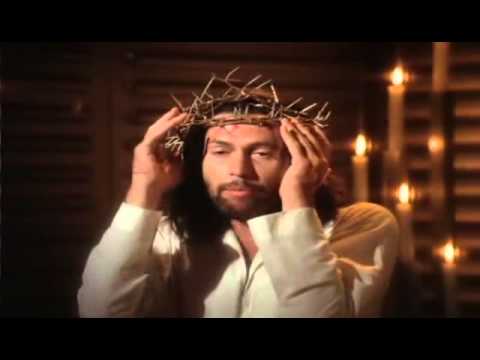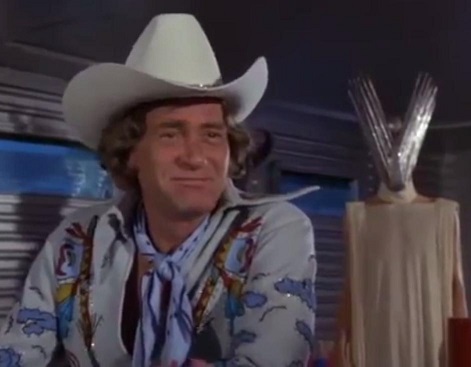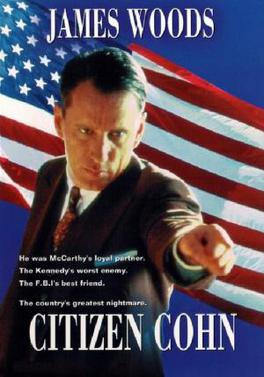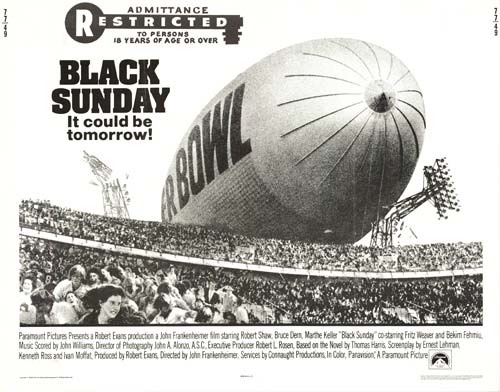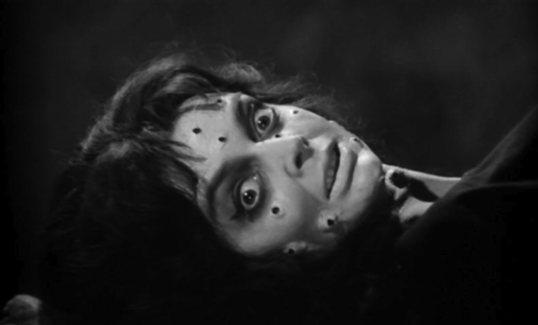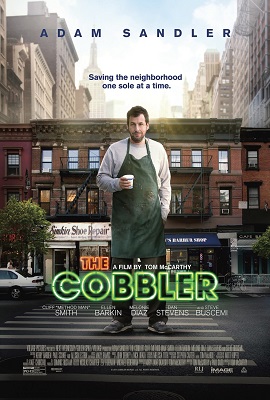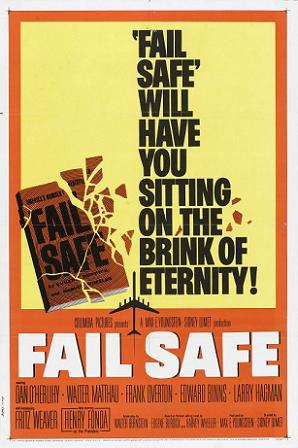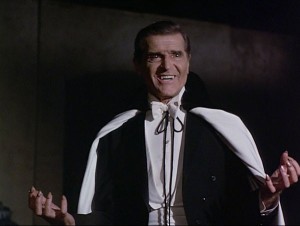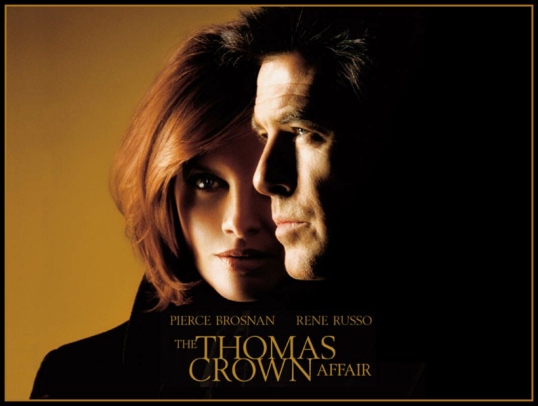Welcome to Late Night Retro Television Reviews, a feature where we review some of our favorite and least favorite shows of the past! On Wednesdays, I will be reviewing Monsters, which aired in syndication from 1988 to 1991. The entire series is streaming on YouTube.
This week, Monsters brings together horror and noir!
Episode 2.7 “Jar”
(Dir by Bette Gordon, originally aired on November 1st, 1989)
Having been hired to find a missing woman, cynical private investigator Jack Bateman (Richard Edson) begins his investigation at the seedy bayou motel where the woman was last seen. However, Mr. Hallet and Jack are not the only people at the hotel. Ann Spiros (Gina Gershon) arrives with her loutish husband, the wealthy George (Ed Kovens). Ann wants to get rid of her husband and she and Jack seem to share an immediate attraction to each other. Does Mr. Hallet have something hidden away in all of his mason jars that could help Ann with that? Of course, he does. The show is called Monsters. This episode is called Jar. One doesn’t have to be a genius to figure out that something pretty extreme is about to happen in that isolated hotel and that it’s going involve something in a jar.
(Someday, remind me to write a post about all of the historical figures who had certain body parts preserved in a jar. I don’t know why that would happen but no matter. You can still see a few inches of Napoleon if you want to, though it might not be the part of him that you want to see.)
From the sultry saxophone on the soundtrack to the shadow visual style, this episode announces itself from the start as being an homage to film noir. It works far better than I think anyone would have any reason to expect. The bayou hotel is wonderfully atmospheric and steamy location. One can literally feel the humidity that runs through this episode. Though he was a bit young for the role, Richard Edson is a convincing hard-boiled detective. Gina Gershon, as always, is a perfect femme fatale and seems to relish the opportunity to keep the audience guessing as to he motivations. Ed Kovens is properly unsympathetic as the wealthy husband. (Can you imagine how unpleasant noirs like this would be if the husbands were decent guys who just minded their own business? It’s a good thing that they’re always louts.) Finally, Fritz Weaver gives a nicely eccentric performance as old Mr. Hallet. This episode is full of schemes and forbidden passions. Fans of noir will appreciate the episode.
What’s especially surprising is just how well the supernatural and the monsters are all integrated into the noir format. The monsters feel as if they belong in the story just as much as the hard-boiled detective and the sultry wife. It takes a while for the monsters to do their thing but when they do, they definitely make an impression.
Monsters can be a bit of uneven show. But Jar is definitely a triumph.



